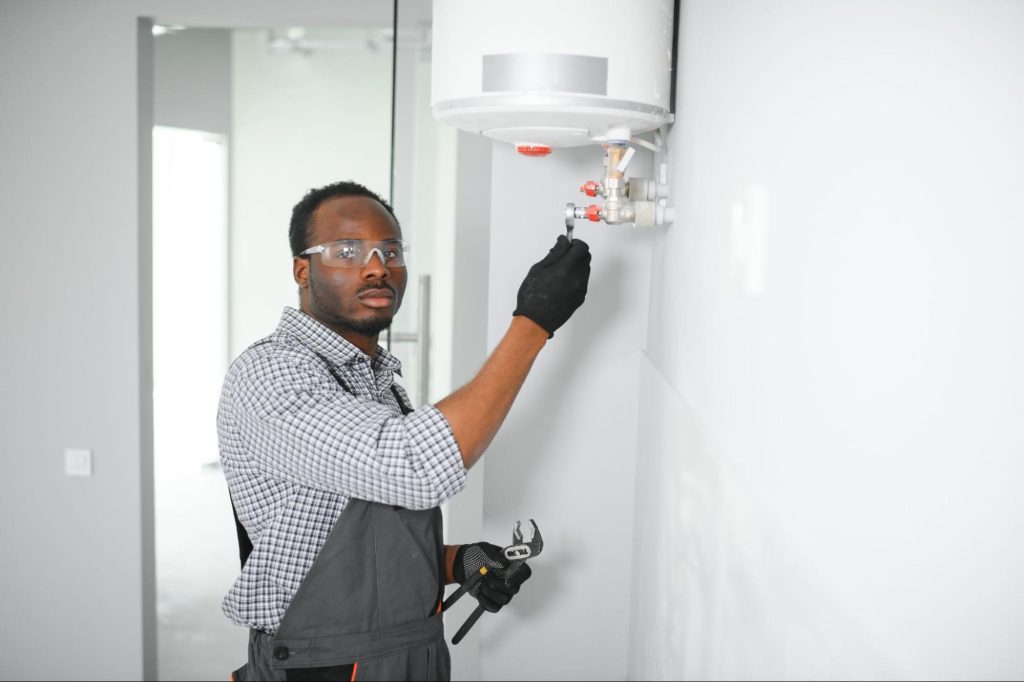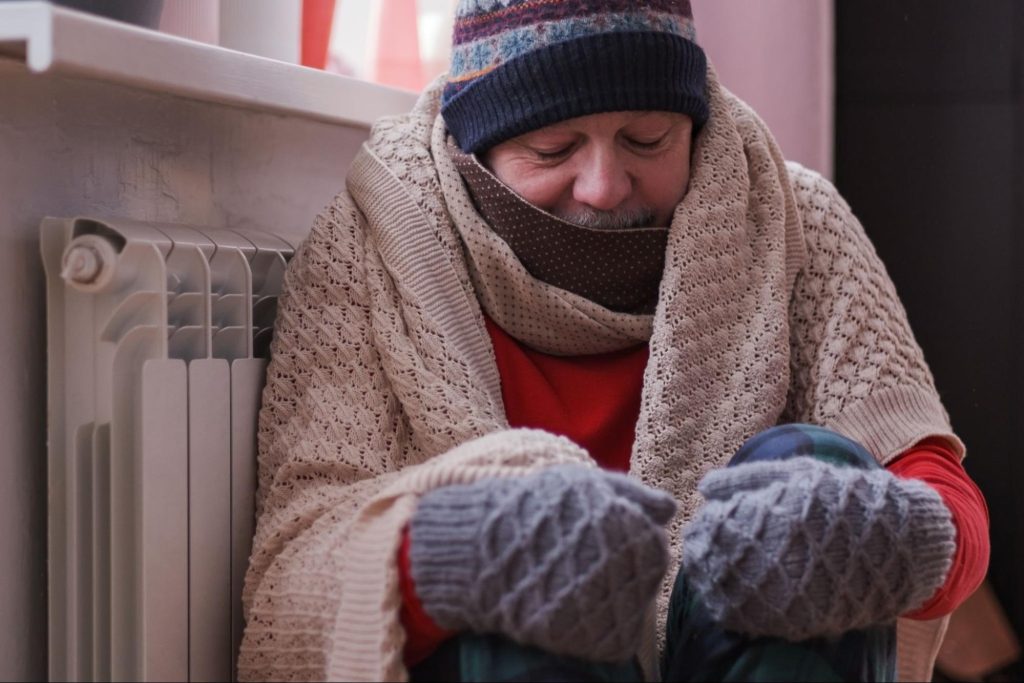It always happens at the worst time. The cold creeps in, the thermostat drops, and the heating system suddenly stops working. It could be the middle of the night, or a snowstorm has just rolled through. Either way, you’re left in the cold literally. When the heat goes out, quick thinking and knowing what to do can make all the difference.
Recognizing a Heating Emergency Before It Escalates
Sometimes, it’s more than just discomfort, but a real threat. When indoor temperatures drop, health risks rise rapidly. Infants, seniors, and people with chronic conditions are especially vulnerable. Being able to recognize a heating emergency can keep a bad situation from turning dangerous.
When a Cold House Becomes a Health Hazard
A cold house is more than inconvenient; it can also be risky. Prolonged exposure to cold air can lead to hypothermia, even in indoor environments. Children and older adults are susceptible to temperature drops. Pets also suffer when the indoor climate becomes too cold. If the temperature inside drops below 55°F and won’t rise, treat it as an emergency.
Signs Your Heating System is About to Fail
Strange noises, such as banging, squealing, or humming, could signal an internal failure. If you notice a burning smell or the system constantly shuts down, don’t wait. Uneven heating or cold air blowing from vents is another common sign. A sudden spike in energy bills can also point to system inefficiency. These signs typically precede a complete breakdown.
Emergency Heating Services: First Steps to Take
When your heat stops working, every minute counts. Taking immediate action can protect your home and loved ones. While waiting for help, there are smart, safe ways to stay warm and prevent damage.
Seal Off Warmth and Minimize Heat Loss
Start by closing the doors to rooms that are not in use. Use towels to block drafts under doors and around windows. Hang heavy curtains or blankets over windows to keep the cold out. Lay rugs down if your home has tile or wood floors. Focus on retaining whatever warmth you still have.
Layer Up and Share Heat Wisely
Dress in layers and wear a hat even indoors. Gather everyone in one room to share body heat. Cuddle up under blankets and sleeping bags. Keep movement minimal to conserve warmth. Avoid overexerting yourself, especially in cold air.
Know What Heating Methods Are Dangerous Indoors
Never use a gas oven or stovetop to heat your home. Avoid bringing outdoor grills or propane heaters inside. These can release carbon monoxide, a deadly and invisible gas. If you’re using a space heater, make sure it’s electric and rated for indoor use. Keep it away from flammable materials, and never leave it unattended.
How to Prepare Your Home for Sudden Winter Power Loss
Power outages often come with heating failures, especially during snowstorms or ice events. Prepare by insulating attic spaces and checking weatherstripping on doors. Keep extra batteries, flashlights, and emergency blankets in a central spot. Store bottled water and nonperishable food in case pipes freeze or grocery stores close. A manual or battery-powered radio also helps if the internet goes down. These steps allow you to stay safe even before the technician arrives.
Use Safe Backup Heat Sources if Available
If you have a fireplace, ensure the flue is open before lighting a fire. Electric blankets and heating pads can provide temporary relief if the power is still on. Battery-powered hand warmers can be particularly helpful for children and seniors. If you own a generator, run it outside at least 20 feet from the house. Never bring it indoors or use it in a garage, even with the door open.

How Emergency Heating Services Respond to Calls
Emergency heating services respond fast. Their goal is to restore heat before conditions become dangerous. Understanding how the process works can help you stay calm and prepared while you wait.
What Happens After You Make the Call
The first thing a technician will do is ask questions. They need to know what symptoms your system is showing. Based on the situation, they assess the urgency of the issue. High-risk homes get prioritized in extreme cold. A dispatch team usually arrives within hours, depending on weather and demand.
Diagnostic Checks Performed by Technicians
Technicians begin by inspecting the thermostat and controls. They test for power flow and fuel supply issues. Components like the blower motor, heat exchanger, or ignition switch may be examined. If a part needs replacing, they may carry common ones in the truck. If not, they may provide a workaround or schedule a return visit.
Common Issues Fixed During Emergency Visits
Frozen pipes, blown fuses, and clogged filters are common culprits. Gas furnaces may need a new igniter or thermocouple. Electric systems may have burned-out heating elements. Sometimes, it’s as simple as a tripped breaker or a faulty thermostat. The technician’s job is to restore safe operation as quickly as possible.
What Happens if a Full Repair Isn’t Possible
If the issue requires parts not immediately available, temporary heat may be set up. Some companies bring portable heating units for emergencies. You may receive instructions to keep the house safe overnight. In worst-case scenarios, relocation for the night may be recommended. A return visit will be scheduled as soon as the parts arrive.
Managing Emergency Heating Calls in Cold Snaps
During extreme cold spells, emergency service teams face an overwhelming number of calls—most companies triage cases based on severity and risk to life. Homes with infants, elderly residents, or medical conditions are prioritized. Some providers increase staffing or deploy mobile heating units when demand spikes. Others create client tiers where regular customers get priority access. Understanding this system can help you avoid waiting during the next cold front.
Choosing Emergency Heating Services That Deliver
Not all heating service providers are created equal. Choosing the right one could mean the difference between hours and days without heat. Reliability, transparency, and expertise all matter when it’s freezing outside.
Look for Providers Offering 24/7 Service
Heating issues don’t wait for business hours. A reliable company offers a round-the-clock response. Ensure their hotline is staffed by live personnel, not just a voicemail. Ask about their average response time during peak seasons. Speed matters when the cold sets in fast.

Check Licensing, Certifications, and Experience
Always ask if technicians are licensed and insured. Certification from manufacturers or HVAC associations shows added training. Experienced providers tend to diagnose problems faster. They also offer safer, more permanent fixes. Don’t risk your home with cut-rate or unqualified service.
Read Reviews and Ask for Referrals
Online reviews can give you a quick sense of a company’s reputation. Look for comments on punctuality, professionalism, and follow-through. Ask neighbors or coworkers about the services they’ve used and liked. A solid track record typically indicates reliable performance. Avoid companies with a pattern of missed appointments or poor communication.
Understand Their Pricing and Guarantees
Transparent pricing builds trust. Ensure you are aware of any flat emergency service fee. Ask what’s included in diagnostics and what counts as a separate repair. Some companies offer satisfaction guarantees or service warranties. Don’t hesitate to request written estimates before work commences.
Why Heating Emergencies Vary by Location
Different regions experience different types of heating breakdowns due to variations in climate, elevation, and the types of standard systems used. In the Northeast, older radiator systems are more prone to frozen pipes. In the Midwest, fuel delivery delays can leave homes without propane or oil. The South sees more electric heat pump failures because systems there aren’t built for extreme cold. In mountainous or rural areas, response times may be longer due to the terrain or weather conditions. Understanding how geography affects service helps you plan more effectively and choose the right provider.
Preventing Heating Emergencies Before They Happen
Many heating failures are avoidable. A bit of care now can save you trouble later. Staying ahead of wear and tear helps avoid cold-weather chaos.
Schedule Regular Inspections and Tune-Ups
Heating systems work hard, especially in winter. Annual maintenance checks help catch minor problems early. Filters are replaced, motors are lubricated, and parts are cleaned. Technicians also check for gas leaks or wiring issues. Preventive care keeps your system running smoothly throughout the entire season.
Watch for Early Warning Signs Between Visits
Strange smells, new noises, or uneven heat shouldn’t be ignored. If your system starts short-cycling or your bills spike, call for service. Catching issues early keeps them from becoming emergencies—even small changes in airflow or temperature control matter. Trust your instincts when something feels off.
Upgrade Before It’s Too Late
Old systems don’t just lose efficiency; they’re prone to breaking down. Most heaters last 15–20 years with good maintenance. After that, parts wear out, and the cost of repairs becomes expensive. Replacing your system before it breaks can help avoid unexpected expenses. Modern units also cost less to run and heat more effectively.
Ask About Maintenance Plans for Extra Protection
Many heating companies offer service plans with benefits. These often include priority emergency service and discounts on repairs. You’ll also get reminders for inspections and tune-ups. That helps reduce your risk and keeps things running year-round. It’s an easy way to stay ready without extra stress.
Stay Ready With Trusted Emergency Heating Services
You don’t need to wait for disaster to strike. Having a reliable emergency heating service on call makes all the difference. Save the service number, familiarize yourself with their process, and keep your household safe. Cold snaps won’t feel as threatening when you’ve got a plan. Early preparation prevents costly mistakes when the heat fails.
Visit the Prestige—Plumbing, Heating, and Cooling blog for wise advice, timely updates, and everything you need to keep your home running smoothly.

